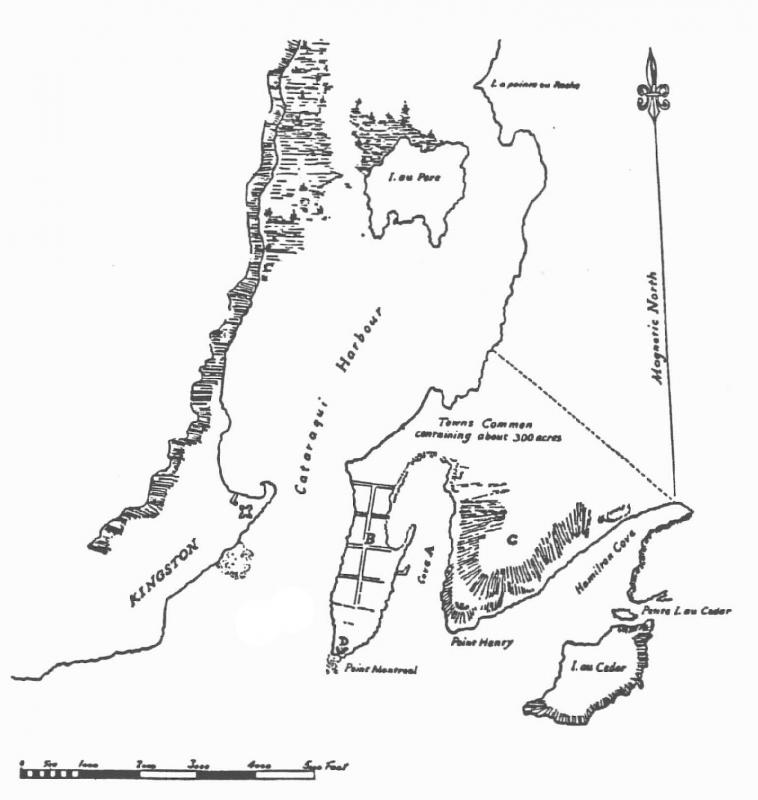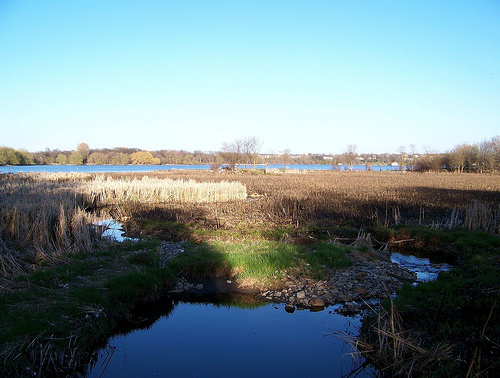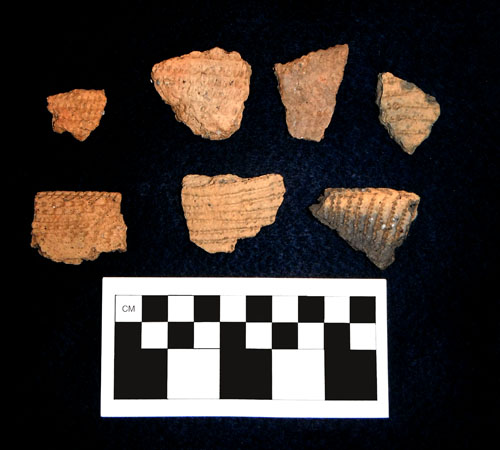Although the prehistory of Ontario extends as far back as 11, 000 years ago, during much of the last glacial period the area of modern day Kingston was covered with ice, making it inhospitable. There is little evidence of early pre-contact settlement in the immediate area prior to 500 CE. Occupation of the Kingston area by aboriginal peoples dates to the Late Middle Woodland Period (circa 900 CE). This area was most likely part of the territory utilized by the Huron, who developed along the north shore of Lake Ontario.
Conflict between the Huron’s neighbouring Iroquoian groups along the St Lawrence River and the south shore of Lake Ontario probably discouraged the construction of permanent villages in the Kingston area. Belle Island was used predominantly during the Middle Woodland period (circa 900 CE) as a fishing/hunting settlement and burial ground.
European contact with aboriginal peoples began in the 16th century with the visits of Cartier which began in 1534. At the turn of the century, the king of France authorized the colonization of New France in a concerted effort to monopolize the fur trade. The first European settlement in the area was Fort Frontenac in 1673.
During the 85 years of French occupation, settlement was not limited to the confines of the fort. Native peoples camped both within the walls and within a safe distance of the settlement. Civilians were also encouraged to settle and farm. Belle Island was known as Isle aux Recolets, but there is no evidence to prove that is was occupied by the religious order.

Fort Frontenac fell to the British in 1758 and with it the surrounding area. It was re-occupied in 1783 when Kingston was chosen for the resettlement of the Loyalists after the American Revolutionary War. The areas of Pittsburgh Township, including Point Henry and Point Frederick were reserved for military use. Belle Island was now referred to as Isle au Père. As Lots in Kingston and surrounding area were being handed out, Isle au Père was patented to William McLean in 1803. The island was unexploited, but the adjacent marsh was used as pastureland and hayfield. It first appears as Belle Island in 1828, and by 1844 the Land Registry Copy Books use this name to refer to the island.
In the 1850s the Royal Engineers projected building a road across the marsh and the island to connect to a bridge over the river to Pittsburg Township. There was no documented European occupation on the Island until 1863, which was at the south end. This was abandoned in 1881 and the island was never reoccupied. The City of Kingston purchased Belle Island in 1956. The City of Kingston used the adjacent Belle Park as a municipal landfill from 1952-1974.

In 1988 the City of Kingston’s Parks and Recreation staff were using mechanical equipment to create a beach on the Island when human remains were discovered. Following this discovery salvage excavations were conducted in 1989. The remains and associated artifacts discovered date to the Late Middle Woodland period (circa 900 CE). This disinterment of human remains led to a co-operative effort. Working in conjunction with First Nations, the City of Kingston and the province of Ontario, the Cataraqui Archaeological Research Foundation conducted testing to determine a suitable location for the re-interment of human remains on Belle Island. A suitable location was found close to the original interments, sufficiently distant from the eroding shoreline, with sufficient soil depth for these and any future interments if necessary.





